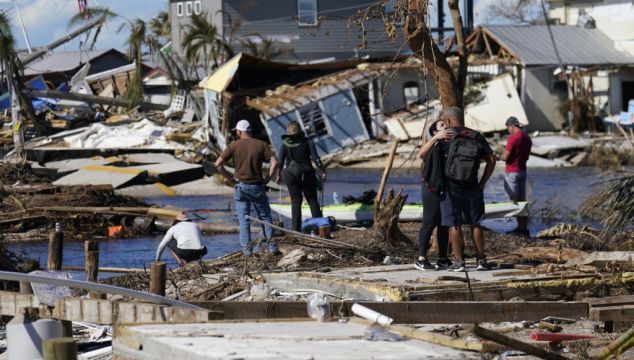Days after Hurricane Ian carved a path of destruction from Florida to the Carolinas in the US, some dangers persist – and have even worsened in some places.
At least 68 people have been confirmed dead as a result of the storm: 61 in Florida, four in North Carolina and three in Cuba.
The storm continues to cause problems, dousing Virginia with rain on Sunday and prompting warnings of potentially severe flooding along its coast.
Ian’s remnants moved offshore and formed a northeastern weather front that is expected to pile even more water into an already inundated Chesapeake Bay and threatens to cause the most significant tidal flooding event in Virginia’s Hampton Roads region in the last 10 to 15 years, according to the US National Weather Service.
Jill and I will travel this week to Puerto Rico and Florida to meet with families and local officials who have been affected by Hurricane Fiona and Hurricane Ian.
We see what you’re going through, and we’re with you.Advertisement— President Biden (@POTUS) October 2, 2022
The island town of Chincoteague declared a state of emergency on Sunday and strongly recommended that residents in certain areas should evacuate.
The Eastern Shore and northern portion of North Carolina’s Outer Banks are also likely to be affected.
With the death toll rising, Deanne Criswell, administrator of the Federal Emergency Management Agency, said the US federal government was ready to help, focusing first on victims in Florida, which took the brunt of one of the strongest storms to make landfall in the United States.
President Joe Biden and first lady Jill Biden plan to visit the state on Wednesday.

Flooded roads and washed-out bridges to barrier islands left many people isolated amid limited mobile phone service and a lack of basic amenities such as water, electricity and the internet.
Officials warned that the situation in many areas is not expected to improve for several days because the rain that fell has nowhere to go because waterways are overflowing.
Fewer than 700,000 homes and businesses in Florida were still without electricity by Sunday night, down from a peak of 2.6 million.
More than 1,600 people have been rescued state-wide, according to Florida’s emergency management agency.
In 2021, there were 20 weather/climate disaster events with losses exceeding $1 billion each to affect the United States. https://t.co/k0B0pfD7I8 pic.twitter.com/yWkhEE7vIp
— NWS GSP (@NWSGSP) October 2, 2022
Rescue missions are ongoing, especially in Florida’s barrier islands, which were cut off from the mainland when storm surges destroyed causeways and bridges.
The state will build a temporary traffic passageway for the largest one, Pine Island, Governor Ron DeSantis said, adding that an allocation had been approved for Deportment of Transportation to build it this week.
Coast Guard, municipal and private crews have been using helicopters, boats and even jet-skis to evacuate people over the past several days.
Elsewhere, power remains knocked out for at least half of South Carolina’s Pawleys Island, a beach community roughly 75 miles up the coast from Charleston.
In North Carolina, the storm brought down trees and power lines.







